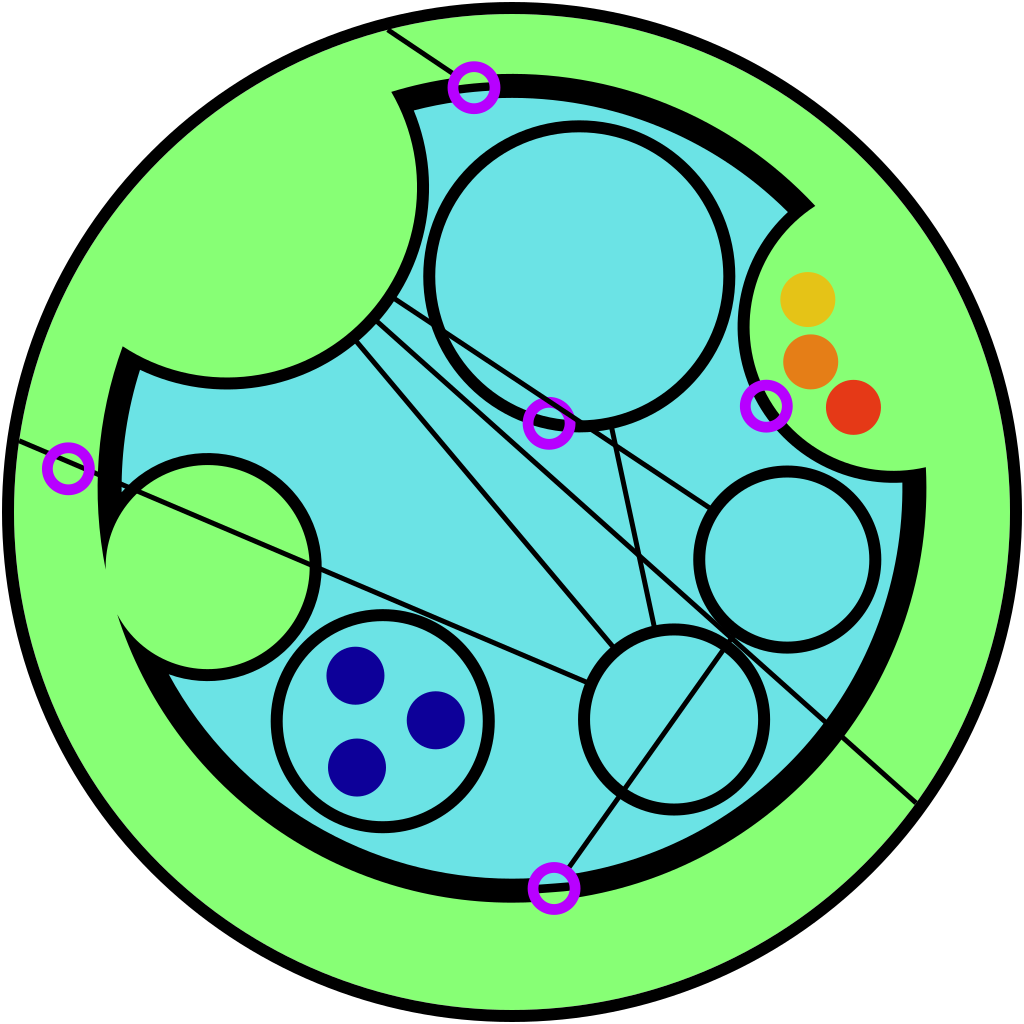Ok this is a physical one.
Temperature is just the total speed of molecule vibrations in an object.
Vibrations are movement. Movement needs energy. All things thrive to be in an energy neutral state, energy always disperses, disbalances are always balanced out.
This means that the natural state of objects is 0°K, the lowest temperature possible, no movement.
That is why you should fill up your fridge and freezer! The only energy you need is for removing heat that comes into the thing and would in turn transfer to cooler objects and warm them up.
But keeping things cool itself doesnt need any energy 🤯
And if you heat it up then less air comes in, and the incoming air will be cooled down faster (energy balanced out between low density air and high density things). So the overall temperature doesnt spike as much and less needs to be transported off.
Neat trick for when you want to cool something for free:
Just wait until the heat death of the universe.
“Utility companies hate this one trick!”
Only if “Big Freeze” turns out to be more accurate than the “Big Crunch”
Yes, over a long enough timeline this is true. Usually people are interested in cooling things sooner than the death of the Sun.
I got time
Depending on how cold you want it, the heat death if the universe is just another 10^101 years away ¯_(ツ)_/¯
So faster than a microwave? Works for me
I am pretty sure the base state isn’t 0K, it’s whatever the average temperature around the object is. If you have a universe that is 10^4 K everywhere, then objects will tend to that temperature. Because the earth is actually quite hot compared to 0 K, your fridge very much is constantly using energy to keep the extremely hot outsides from warming the inside. It would get easier if the earth was colder.
Yesssss but technically cooling doesnt require energy XD just insulating heat
Which does not increase the more you want to cool, it only depens on the size and properties of the barrier (the fridge)
At least that makes sense for me
I think I understand the claim: the energy cost of keeping heat outside of a box should be proportional to the surface area, not how much stuff is in the box.
This is true; but only once the contents of the box are already cold. I think what it neglects is that the stuff you are putting in is not already 0 K (or your fridge temp), it is usually much warmer. So the fridge must work rather hard to pump all the heat you add back out. (Incidentally, the fridge has an even harder job if the volume of the fridge container is bigger, since there are more places for the heat to hide/cluster.)
We see the opposite with old fashioned fridges (an insulated box that you put ice into, and removed the water when it melted) or modern coolers. By making an insulated box, you make the interior become the average temperature of the stuff inside. To make the stuff inside cold, you must add something much colder to bring down that average, like a pack of ice. It’s pretty hard to get 0K stuff on earth, so many things to bump into, hence very hard to use refrigeration to get things down to 0K.
You might also be tempted by a selective insulator, that keeps hot stuff out but lets fast moving particles inside escape (so that the contents become cold). This is a classic thought experiment! Maxwell’s demon. It turns out that any such intelligent barrier will itself need energy.
In the off chance this involves the plan to load the fuck out of your freezer since it’s “free” if you overfill the fridge/freezer you are likely to interfere with the flow of cooling air causing cold spots and hot spots to form that will reduce overall efficiency
Interesting. Dont freezers also cool via conduction?
Well temperature goes from hot to cold so are you referring to warm food cooling from conduction of touching colder food?
Well warmth is flowing from the food to the cooling object via conduction
If it’s directly touching the walls it will decrease the efficiency of the freezer since initially the rate of resistance to heat transfer could have been represented by L/KA+ 1/hA with L being thickness of the wall of the freezer K being the thermal conductivity of the freezer wall and A being the surface area and h being the convective heat transfer of mostly stagnant air. In that case the effect of conduction through the freezer wall is a worse insulator than the transfer of heat through the air but by touching the item to the freezer wall you are trading that 1/ha for another L/KA with a negligible L so the resistance to heat transfer is also negligible.
That’s a lot of terms but you have experienced this before if you have a pan on the stove and you hold your hand above the pan it will feel significantly less hot then if you place your hand directly on the pan. If you have someone put a fan over the pan so there is a flow of air and then put your hand in the same place it will feel warmer since now you have air movement which increases your h term but it will still be significantly less hot then if you touch the pan.
I still might not be explaining this well but the math for it comes from the resistive model of heat transfer that while it has a lot of reciprocals I still find it to be the easiest to get an intuitive idea of what’s happening
In summary though from everything.
Empty freezer bad because the air inside leaves whenever you open it.
Very full freezer bad because it blocks flow of coolant causing hot spots and cold spots so needs to be kept much colder to make sure the hot spots don’t get too hot which causes more losses
Touching freezer wall bad because accelerates warming
Mostly full freezer good because the items work as a heat sink helping to keep a regulated temperature while allowing proper flow of coolant
No, it is not, your premise is false (in our real world. TM.) but your reasoning is good.
Energy does not vanish, you need a process to remove energy of a system.
Think in the planets orbiting the sun or the energy contained in a damm with millions liters of water. The energy is not dissipating itself, it is constant, forever.
So as long as the system is not disturbed, keeping the system in the same state is energy free because you only need energy to alter the system. Even of the energy distributions is not evenly balanced through it.
I feel like this is technically true, but in reality it only works like this in the void of space.
The energy I’m spending is to counter the molecule vibration transfer that’s being done (against my food’s will) by the sun and everything else in the space around my fridge.
I am ready for some physicist to pop out of the tall grass and explain how wrong I am.
You’re not wrong in this context.
If ambient temperature was say…21 C, then it’d take no energy to keep things that cold.
So in space, once you do cool something down enough, and place it far from any stars, it’ll stay cold for free.
Keeping anything at any temperature different than whatever it’s interacting with takes energy. Hot or cold.
Why would you assume the natural state of a ‘object’ is absolute zero?
Because then it doesnt move and there is no energy it can give to the surrouding. Actually there is, stored in molecular bounds. But no molecular movement, just atoms I guess
So you propose that all matter naturally has zero volume because its at absolute zero by nature.
Objects at zero Kelvin are not zero Volume?
Wait until you hear about the theory of the “heat death” of the universe then
Atoms are surprisingly bad at removing heat. Being hit with slower atoms and transferring that energy ((like newton’s cradle with mismatched swings opposing each other) transfers energy much, much faster than what happens naturally in the vacuum of space. Most spacecraft have more of issue with overheating than freezing. The rate at which radiation is emitted is very low when you get to sub-human temperatures. There’s also tons of heat sources around us in space, so the last few degrees are so, so hard to shed.
Keeping a fridge stocked increases the thermal capacity of the coldness. Air falls out quickly and is subject to rapid temperature change when the door is open. Keeping a bunch of solid/sealed masses in there will bank the lack of heat. You’ll likely lose more air and the falling not-so-cool air will impart heat into your 24 pack of beer, but you’ll have a bunch of distirbuted cold objects to re-cool the air once the door is closed instead of relying on air circulation alone. Instead of raising the air temp by, say, 5 degrees once settled, it’ll only go up maybe 2 degrees - much better for food storage. But the fridge will still have to re-cool those beers, too.
“Spacecraft have more of an issue with overheating than freezing” is a really really
coolhot fact. Do you have an easy source, maybe somewhere that discusses techniques/history?I’d have to look for specific discussions, but I have some examples. The wiki page covers a lot. Spacewalk/moonwalk suits are white to reflect the sun’s heat (the orange suits are for takeoff/landing, a sin, terrestrial recovery). That shiny silver or gold foul appearance of classic space craft from the 60s/70s is for heat reflection. The JWST is on like 4 layers of wafers (they look like a sail) to isolate it from the sun’s heat. Quite visibly in depictions, the scrunched panels on the ISS are actually radiators.
There’s a misconception about space and heat. It didn’t originate, but I’m Sur eit was propogated by the 00s space movie that had an astronaut pop off their helmet and freeze. Mission to Mars? Red Planet? Space cowboys? Yes, you probably would freeze upon exposure to space, but not because it’s cold. The sudden drop in pressure would vaporized a tremendous amount of water from you. Jus like how sweat works, the evaporative cooling would drop your skin temperature greatly.
A side topic is that there’s narrow frequency range of radiation that is neither emitted by the sun nor reflected by the atmosphere. It’s in the near if rated range. There’s a NighthawkInLight video that develops a paint that resonates in this “window” to actually cool it below ambient air temperature. There’s always a control piece for science’s sake.
This is less of a source and more like a compilation of resources, but for anything spacecraft related I can always recommend Atomic Rockets. For this specifically, the page on Heat Radiators.
Thank you! (
I think the second link lost a ‘p’ at the end.Fixed!)Edited my comment to fix, thanks!
It’s good that you think about this stuff. It is a sign of an inquisitive mind. And you are so close to the truth.
But… You literally have the ability to look this stuff up in seconds.
https://en.m.wikipedia.org/wiki/Heat_transfer https://en.m.wikipedia.org/wiki/Conservation_of_energy
It’s often good to have a conversation on the topic as well as the basic info.
But keeping things cool itself doesnt need any energy
My electric bill disproves this statement. Otherwise, why would we need electrical devices that remove heat from things?
Ugly physics
We figured out the issue: moving energy against a naturally occuring gradient. Like heat away from a cold area, or focussing heat somewhere where the surrounding is cool
U forgot to account for entropy. Thermodynamics is a bitch and heat and temperature are useless without an energy gradient.
Yes I just thought about the same.
The idea was that cooling stuff doesnt involve manually moving it.
But entropy is the thing here. Moving energy against the path of natural entropy.
Well, “fill your fridge/freezer so there’s less cold air inside that can be replaced by warm air when opening it, then it does need less energy to cool down again after opening” is true, but the reasoning… No isolation is perfect (and certainly not that of affordable household fridges) so there’ll always be warmth getting in that has to be moved out again. Cooling only doesn’t require energy if surrounded by equal coolness.
Cooling only doesn’t require energy if surrounded by equal coolness.
Okay I guess that is true. Heating also doesnt require energy if the surrounding is just as hot.
Moving stuff takes energy, and you either need to focus heat or disperse it.










